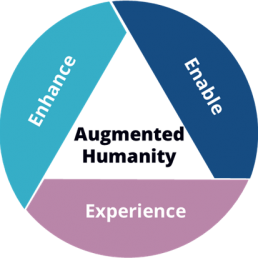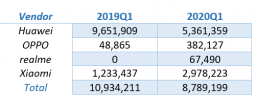Assessing Where to Play and How to Win in 5G
How big is the 5G opportunity? This is literally a trillion-dollar question today. 5G promises mobile connections that are at least 10 times faster, with vastly improved levels of reliability, as well as latency that is up to 20 times lower, which enables applications to respond instantly to commands.
These capabilities can enable hundreds of exciting new use cases across a range of industries, from manufacturing, to healthcare, to retail and transportation, as well as vastly improving existing consumer applications such as video and gaming. As the current crisis shows, we need strong and reliable connectivity more than ever.
5G Opportunity in Enterprise
It’s the incremental 5G opportunity in enterprise that excites the most. For example, Ericsson estimates that investments driven by the value 5G is providing across all industries are expected to be around $1.5 trillion in 2030, of which $700 billion is “addressable” by service providers.
McKinsey finds that implementing the most promising use cases in just four very broadly defined areas of mobility, healthcare, manufacturing, and retail alone could increase global GDP by $1.2 trillion to $2 trillion by 2030.
These figures are breathtaking — but also raise some important questions. If 5G is such a massive opportunity, why aren’t mobile operators getting more excited about it? Why aren’t more operators racing to upgrade their existing networks to 5G within a year or two?
The GSMA, the mobile industry trade body, counts 79 active 5G networks globally. But apart from a few exceptions, most of these have tiny — and slow growing — 5G population coverage, and largely act as capacity backfills to existing 4G networks in large urban areas.
We think this service provider caution stems from their recognition that 5G is a big opportunity — but one with an uncertain payout for them.
Rolling Out 5G Networks Is Expensive
This payout uncertainty arises from both sides of the 5G ROI equation. First, rolling out 5G networks is expensive: the GSMA estimates that 5G network rollouts can be up to 71% more expensive than 4G on a like-for-like basis. This is because they require a lot denser radio network, much “fatter” transport network, and a lot more energy to meet the expectation to carry up to 10–20 times more traffic in the next decade.
Second, while new 5G use cases do enable tremendous economic value, the ability to precisely estimate and then plan a way to effectively monetize a fair share of that value in each local market is the big question that every operator must address.
5G Industry Use Cases
The complexity of sizing the local 5G addressable markets stems from multiple factors. There are hundreds of 5G use cases across dozens of industries, and the potential of each one needs to be evaluated.
We have extensively studied the 5G use cases in a range of industry verticals. Many of these use cases require collaboration and coordination across service providers, technology vendors, and enterprises. These are efforts that will vary by country amid vastly different local ecosystems, agendas, and incentives.
The 5G deployment constraints must be anticipated and addressed differently in light of the diverse market, regulatory, and spectrum availability issues.
All of this complexity led to the current very cautious “wait and see” industry approach to 5G, which has only been amplified by the existing health, economic, and geopolitical dislocations. The industry has been guilty of an over-enthusiastic “build-it-and-they-will-come” approach to rolling out new mobile generations in the past (remember 3G?). However, the current ultra-cautious “wait-and-see” approach to 5G may well be a pendulum swing too far to the other extreme.
We think the mobile industry needs more ambition in both assessing and addressing the 5G opportunity. And now is the time for the future leaders of the 5G ecosystem to carefully assess where to play and how to win in 5G.
Angel Dobardziev is a senior director at IDC European Consulting based in London. He can be contacted at adobardziev@idc.com.
Augmented Humanity: The Enabling Value of Technology in Today's Society
Imagine sitting in a café in Tokyo, with your friends, and being served coffee by a robotic avatar remotely controlled by a lady affected by amyotrophic lateral sclerosis. You chat with her and even take pictures with her avatar. You connect to a person who is physically impaired and would not otherwise be able to work and “be” there with you.
This is not sci-fi. OriHime-D robots, developed by the Japanese start-up OryLab, are enabling 10 people with disabilities to work as waiters and waitresses in the Dawn Ver Beta Café.
Why Is it Relevant?
According to the European Disability Forum, at EU level, only half of people with disabilities are employed, compared with 75% of those without disabilities. Moreover, women with disabilities, young disabled people and people in need of high-level support are even more likely to be discriminated against and excluded from the labour market. Unemployment and financial problems can lead to poverty and social exclusion, and the socioeconomic impacts of these figures are alarming — highlighting how companies and society at large are missing an opportunity due to a lack of preparedness and resources.
The Convergence of Technology and Humanity
Technology and society are at a crossroads, where accessibility and inclusion are key dimensions across all domains of living, from mobility, to work, to leisure. Digital solutions are rapidly evolving, and are pushing human boundaries — enabling experiences, connections and perceptions that were difficult to imagine even just a few years ago.
At IDC, we’ve been discussing how technology and humanity are exponentially converging, giving rise to the concept of augmented humanity, and looking at the impact that emerging technologies such as AR/VR, wearables and brain-computer interfaces (BCIs) can have on human senses, capabilities, perceptions and insights.
The augmented-humanity concept can be split into the “3Es” — enable, enhance and experience — with this post, as part of a series of deep-dives, focusing on the “enable” pillar.

Enable: The Untapped Potential of Accessibility and Inclusion
The “enable” dimension focuses on the role of technology in enabling humans to achieve an output they wouldn’t otherwise be able to achieve — the “what” humans can do and perceive. “Enable” relates to the broader accessibility concept and how technology can help to foster inclusion and unlock human cognitive and physical activities that would otherwise be denied, from overcoming natural restrictions to enabling empathy, to providing unprecedented resources and insights to working professionals. There are a number of use cases here that relate to the concept of accessibility and open it up to include a wider range of activities. These include:
- Technology enabling people with physical and cognitive disabilities. For example, as shown in research by BrainGate, BCIs can enable people with paralysis to operate mobile devices such as tablets just with their thoughts. In the study, neuro signals captured by an aspirin-sized implant were connected to a Bluetooth interface configured as a virtual mouse and paired to a tablet. The participants, affected by spinal cord injuries, were able to make up to 22 point click selections and type 30 characters a minute. On the physical impairments and disabilities side, Open Bionics has developed bionic limbs with a mission to make them more accessible and “desirable.” It started by introducing the Hero Arm, a stylish bionic hand aimed at turning children with limb disabilities into “bionic heroes” — and, in doing so, making science fiction a reality.
- Smart homes to make the vulnerable and the less digital savvy feel safe and independent. Smart homes are a new way to provide value-based care and tackle the challenges of an ageing population, especially during the COVID-19 pandemic when the more vulnerable members of society, such as chronically ill patients and the elderly, need all the help they can get. Sensors that monitor temperature and humidity, or detect falls, as well as facial recognition systems for home entry, are just some of the solutions being rolled out to support the elderly and people with dementia living on their own. In Scotland, for example, a partnership between NHS Highland and the Albyn Housing Society has developed a new housing concept that will include ambient, physiological and building sensors to collect data on things such as dehydration, diet, the use of prescribed medications, and levels of activity and social interaction.
- Technology enabling a new level of empathy. Augmented reality (AR) and virtual reality (VR) technology can support social compassion and empathy toward those most likely to experience discrimination and social isolation, such as the homeless and immigrants. New research from Stanford University found that a VR experience increased participants’ awareness of and compassion and advocacy toward the homeless — more so than with more traditional types of “perspective taking” such as reading about or trying to imagine the experience of being homeless.
- Smart diagnostics and treatment for deeper insights. With advancements in smart diagnostics and analytics tools, healthcare teams and patients can potentially access a new level of data granularity and insight. Small, pill-shaped, water-proof ingestible devices, for example, can work with Bluetooth technology and connect to wireless devices equipped with apps to measure PH, temperature, and pressure readings, detect gut bleeding and analyse gut gas to provide new insights on gut health and markers for gastroenteric tract disorders.
Conclusions
At a time when technology and humanity are exponentially converging and societies are rethinking the ways they look at accessibility and inclusion, staying competitive requires companies to align new technologies with new value propositions — and put the human factor at the center of their strategies. Organisations will need to leverage human-machine interactions that broaden the spectrum of human cognitive and physical capabilities, challenging accessibility boundaries and developing solutions that align to the needs of individuals and societies at large.
If you want to learn more about Augmented Humanity or have any questions, please head over to https://www.idc.com/eu and drop your details in the form on the top right.
The Frontline CIO Interview - Education
In the latest of our interviews with IT leaders from key sectors affected by the Coronavirus pandemic, Jason Oliver from the University of Sussex in the south of England is answering the questions. Our CIO Advisory practice makes every effort to learn from the experiences of a wide range of organisations, and as you will see from Jason’s answers the Higher Education sector is rapidly adopting the latest technologies.
Who are you, what organisation do you work for and what’s your role?
My name is Jason Oliver, I joined University of Sussex in September 2018 and my ‘role’ is very varied – and becoming more so each passing day. My job title is Director of IT, however that really not a great descriptor given that, alongside being the technology lead, I am also the sustainability lead, I am in the process of introducing an Enterprise Portfolio Management Office and I am also a Director of our Facilities Management company. On top of this I am also a Governor at my children’s primary school which is giving me plenty of non-official work too recently!
Since you joined the university, what do you think the biggest change has been in terms of how the organisation views technology (up until the pandemic)
I would say that we have developed more trust in the IT team and that has had a very positive effect in many ways. More work and projects have been commissioned over the past year than in the previous five put together. This means that the perception from the wider organisation is that we are delivering more. The team doing the work has not changed significantly but we have been able to articulate our business cases more effectively and thus have been able to bring about substantial improvements and modernise.
We have also structured the team to more succinctly capture and meet the needs of the wider organisation. This means that our customers (academics, researchers and students) feel that their voice can be more often heard now and we can more effectively give them what they actually want rather than what we think they want.
What improvements are you most proud of from your time in that role?
Actually the most important improvement is a really simple one (at least to the unknowing eye!). When I first joined I was told horror stories about how student submission periods (when students submit assessments, etc) had not run smoothly for several years – this was a huge stressor for our student community and had a detrimental impact on the feedback we received. We immediately applied a project mindset to the dates and planned all technical details down to the smallest items, considering all aspects of resiliency and continuity planning. Since I started we have not had any problems across the dozen or so submission periods and if our students can submit their work seamlessly then we are doing our job well.
From a more technical sense, I am hugely proud of the massive modernisation of the pedagogy. In just over a year we have introduced (and fully integrated) a new virtual learning environment, a video management system that allows the playback of lectures and a video conferencing platform. This has allowed us from a fairly traditional face-to-face approach to teaching into an institution that has fully synchronous online teaching ability. Given the recent pandemic this was obviously an extremely good time to have enabled this jump forward because it has limited what could have been a far more detrimental experience for our students.
What do you find surprises people about your organisation and how it uses tech?
I cannot really speak for others but what surprised me the most upon joining this sector as a whole is the risk aversion for utilising modern technology. In fairness, things are changing quickly across the sector but 18 months ago there was limited use of cloud (inc SaaS), large monolithic bespoke software applications were at the heart of many universities and there was limited concept of agile delivery.
We have responded at pace and are in the process of moving all our systems using a hybrid multi-cloud approach, we have placed micro-systems at the heart of the business and we are breaking up the legacy applications bit by bit. Automation, containerisation, bots and flexible working are all now de-facto elements of our day-to-day working lives – that would have seemed inconceivable just over a year ago.
How have you responded to the remote working challenge of the pandemic?
The first few weeks were manic. In early March only around 100 staff members were able to work from home effectively and this was through a legacy remote desktop connection. By the end of March, 22,000 staff and students had the full ability to work remotely. The IT and Technology Enhanced Learning teams stepped out of their everyday roles and we literally pulled together to create an online working capacity at pace. I have already mentioned the synchronous teaching elements above, but we also worked to review and update our security, our collaboration platforms, we moved key systems around rapidly and we introduced several new systems that would enable people to do their job no matter where they were. We pulled several hundred PCs out of cluster zones (hot desk PCs for students) and rebuilt them before shipping them out to staff and students at home who had a need. As I say, it was manic!
Once things had settled down a bit, focus shifted to stability and the future. How will we return to campus? How can we provide great student experiences when not on campus? How will we retain some of the great new ways of working that we had put in place once normality is restored? These are questions we are still working through but suffice to say we now respect new things. Meeting presence does not mean physical presence; the balance between work life and personal life has never been more critical; you do not need to be onsite to do great work. These are things that we will carry through into whatever the new normal turns out to be!
Have you furloughed many IT staff – how did you manage that and how are you keeping those staff engaged?
Our department has furloughed only a small handful of people. These were primarily staff members who operated in face-to-face roles and were not able to continue after the lockdown commenced. Almost everybody else has been able to carry out their role, albeit in an amended fashion. Keeping all staff engaged, not only those furloughed, is a prime consideration and we are always looking for ways to improve it. Regular managerial calls, Zoom drop-in sessions, daily videos and weekly bulletins have all played a part in keeping people in touch with what is happening.
Will the effect of the pandemic change your priorities as an IT organisation?
It already has. We had a 5-year plan to modernise and move towards being more flexible in our delivery methods and that has been already pushed to the fore. Our sector, like most others, will experience great change as a result of the pandemic and the key for us will be to remain responsive to our students’ needs and adapt at pace to continually deliver the best services we can. The priorities for our institution have of course changed in the past three months but our vision remains the same – ‘A better University. For a better world’. (https://www.sussex.ac.uk/strategy/)
The Challenge for Chinese Brands in European 5G
5G does not currently look as if it will produce more big new players in China, as it favours large companies with extensive R&D. Instead, it offers the opportunity for the Chinese brands that gained scale in 4G to push their global expansion further, in particular into Europe.
All introductions of a new technology are potential disruptions. 4G was a disruption that enabled a new group of Chinese brands to push others out of their domestic market and become the big new players in the global smartphone arena.
These brands have already made a lot of progress abroad. Xiaomi and the BBK stable brands — OPPO, vivo and OnePlus — have expanded across Southeast Asia and other emerging markets such as India.
Now would seem a great opportunity for those brands in Europe. Their state-backed Chinese rival Huawei, already strong in Europe, is a weaker company given the US sanctions, and there is market share at play.
The average 5G sales prices in China of the new brands are already down to half of those of the 5G models of Samsung that dominate 5G sales outside China.
Europe, a Quarter of Global Premium Android
The new Chinese players aspire to be full portfolio players producing premium as well as budget models. Europe has to be a key element in any such strategy — it accounted for nearly a quarter of global Android sales above $600 retail before sales tax in 2019, according to IDC’s Worldwide Quarterly Mobile Phone Tracker.
This is the quandary for the Chinese brands. While the market opportunity is to push 5G smartphones at entry-level prices for the technology, if they come into the market at too cheap a price they will just cement the view that they are cheap Chinese alternatives.
Unit Shipments New Chinese Brands in Europe*

Brand Recognition Does Not Come Overnight
Building a brand takes time. An alternative approach would be to buy up an ailing Western brand and relaunch it. In cars, to take one example, China’s Geely has done that successfully with Volvo.
In phones, Lenovo has done less well with the Motorola brand, and TCL with the Alcatel brand, but the new Chinese players come from a much stronger position within their domestic market. The trouble is these days there are just not obvious Western brand name candidates left to take over or rejuvenate.
Instead there have been a raft of subbrands. BBK’s vivo recently spawned IQOO, and Xiaomi has launched Pocophone. Launching a subbrand may be a way of making a part of your portfolio more exclusive, but it’s only likely to work once the main one is well known. These Chinese names are not so high profile yet in Europe.
On the brand image score, it would make sense to enter at the top of the market and then only come down in 5G pricing step by step. On the other hand, the 5G opportunity in Europe is in the middle, and it is now.
OPPO appears to be trying to play both the top and the middle at the same time. At the end of May, it launched two cheaper additions to its Find X2 5G range in Europe. It has chosen to mimic the formula that has worked well for Huawei, in having a “Lite” version of a flagship phone.
But the price gap is massive — £399 for the Find X2 Lite against £1,099 for the flagship. This may be stretching the halo effect a bit too far. Nor can the Find X2 name be considered a real winner.
The Importance of the Operator
But OPPO has made one big move in playing the game in Europe, where the business of selling phones is largely through the mobile operators and their retail networks. Earlier in May, it announced a deal with Vodafone to put its phones into the operator’s shops across the continent.
Working with operators came easily for Huawei, as the operators were already its clients in infrastructure, but the newer players have generally built up an export business in countries where the open market dominates in phone retail. Xiaomi goes further, liking its own brand name shops where it can display all its other products, which extend to scooters and luggage.
OPPO says that under its deal with Vodafone the promotion of the Find X2 range will be linked with tariff deals that will give buyers 5G use at no more cost than 4G.
Overcoming the Indifference Threshold
That’s the sort of arrangement that will help 5G get over the threshold of “do I really need it” and “what does it really offer me more than I’ve got at the moment”, which is the big bar to 5G becoming mass market, particularly in economies reeling from coronavirus lockdowns.
Europe is an old continent, and conservative. If you want to succeed in Europe, become more European.







